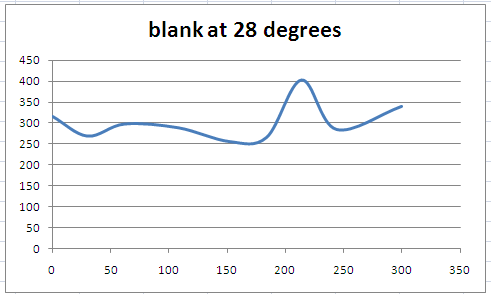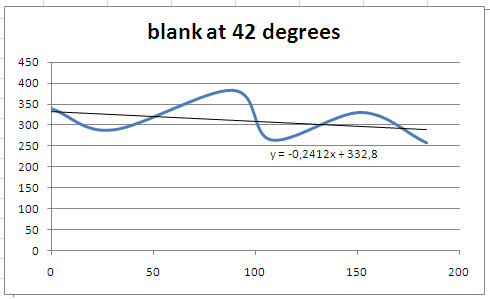Team:Imperial College London/Wetlab/Results/Thermoinduction/Fluor blankvariation
From 2009.igem.org

Fluorescence Blank variation
Here we repeat a similar analysis to the previous part, except that this time we will account for variations in the blank for fluorescence data. However, we suspect that there has been a systematic error in the results returned by the fluorometer. The analysis brings out the data's most important features and compensates for these.
All the raw data files will also be uploaded in the wiki for further details and explanations.
28 ºC
- At this temperature, variations of the blank levels have been taken to be between 250 and 300 Fluorescent units (discarding overshoots).
- This means that once again, fluorescence data must be normalized against different blank data values to account for this variation.

Figure 1: Fluorescence variation in blank wells at 28ºC
42 ºC
- Here, variations seem to be linear, as seen in the absorbance case so one of the causes for this may be evaporation.
- However, they may also be due to systematic error of the fluorometer.

Figure 2: Fluorescence variation in blank wells at 42ºC
 "
"



